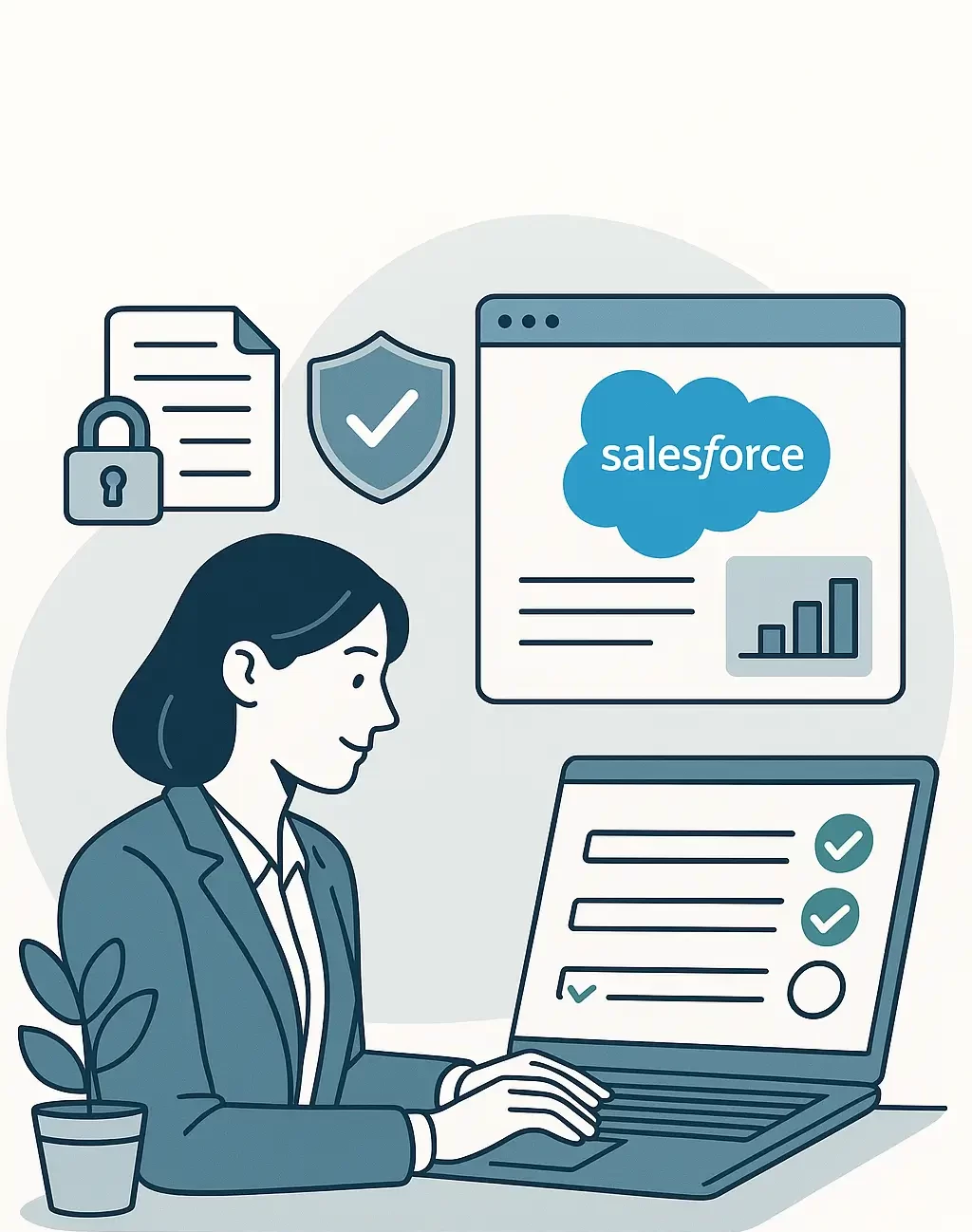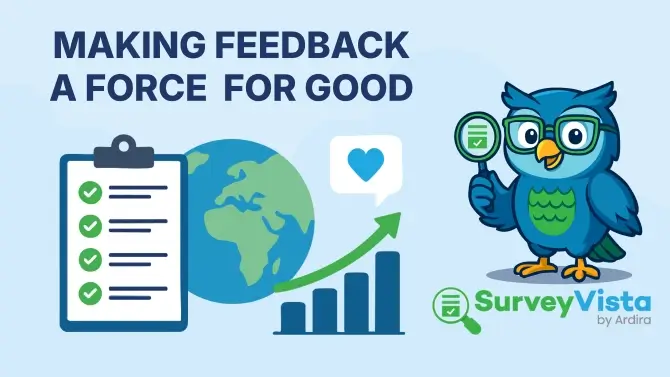Support teams spend way too much time manually sending surveys after closing cases. What should be a simple “case closed, survey sent” process turns into a daily administrative burden that pulls agents away from actually helping customers.
This is exactly why Salesforce Flow exists—to automate these repetitive tasks so your team can focus on what matters most. When you combine Flow with Salesforce’s native survey functionality, you create a seamless feedback collection system that works behind the scenes.
What Is Salesforce Flow Survey Automation
Salesforce Flow lets you create automated workflows that trigger when specific conditions are met. For surveys, this typically means sending a customer satisfaction survey immediately after a case is marked as “Closed” or when an order reaches “Delivered” status.
The beauty of this approach is timing. Customers receive feedback requests while their experience is still fresh, leading to higher response rates and more accurate insights.
Common automation scenarios include:
- Post-case resolution CSAT surveys
- Order completion feedback requests
- Product delivery satisfaction checks
- Service appointment follow-ups
- Support ticket closure surveys
Prerequisites Before You Start
Getting survey automation right requires a few setup steps that many organizations skip. Don’t be one of them—these foundations prevent headaches later.
Enable Surveys in Your Org
Navigate to Setup > Surveys and toggle the “Enable Surveys” setting. This isn’t turned on by default, so you’ll need admin permissions to activate it.
Once enabled, make sure your user profiles have the right permissions. You’ll need “Manage Surveys” and “Send Survey Invitations” permissions for users creating and managing these workflows.
Set Up Your Survey First
Create your actual survey before building the Flow. Test your survey independently first—send it to yourself, complete it, and make sure the questions flow logically and responses save correctly.
Configure Email Deliverability
Survey invitations are emails, which means they need proper authentication to avoid spam folders. Set up your SPF, DKIM, and DMARC records if you haven’t already, and ensure your email notification configurations are properly established.
Your IT team probably handles this, but it’s worth double-checking that your survey invitation emails will actually reach customers.
Step-by-Step Flow Creation Process
Ready to build your automated survey system? Here’s the exact process that works every time.
Create Your Record-Triggered Flow
Go to Setup > Flows > New Flow and select “Record-Triggered Flow.” This type of Flow monitors specific objects for changes and takes action when conditions are met.
Choose your triggering object—usually “Case” for support scenarios or “Order” for sales follow-ups. Select “A record is updated” as your trigger condition since you want surveys sent when status fields change.
Configure Entry Criteria
Set your specific trigger conditions. For support cases, you can configure Flow to send surveys when cases are closed by setting “Status equals Closed” or “Status equals Resolved.”
Important: Select “Only when a record is updated to meet the condition requirements.” This prevents the Flow from running every time any field on the record changes.
Choose “Actions and Related Records” for optimization. This setting gives you the best performance for survey distribution workflows.
Add Send Survey Invitations Action
Drag the “Send Survey Invitations” element onto your Flow canvas. This is where the magic happens.
Configure three key settings:
- Survey: Select the survey you created earlier
- Recipient: Choose the contact associated with your triggering record
- Generate Unique Link: Always enable this for security
For recipient mapping, use the record context to pull the contact information dynamically. This ensures surveys go to the right person every time.
Test Your Flow
Create test records in your sandbox environment. Close a test case or update an order status to trigger your Flow.
Check that survey invitations are delivered correctly and that the email formatting looks professional. Verify that survey responses link back to the original records.
Advanced Configuration Options
Once your basic Flow is working, you can add sophisticated features that make your feedback collection even more effective.
Dynamic Survey Selection
Use decision elements to send different surveys based on record attributes. Route CSAT surveys for support cases but product feedback surveys for sales orders.
This conditional logic ensures customers receive the most relevant survey for their specific interaction type.
Survey Personalization
Pass record data to your surveys as URL parameters. Pre-fill customer names, case numbers, or product details to create a more personalized experience.
For organizations serving diverse markets, consider implementing multi-language survey notifications to improve response rates across different customer segments.
Reminder Workflows
Create follow-up Flows that send gentle reminders to customers who haven’t responded after a few days. You can implement automated survey reminder flows to maintain engagement without overwhelming customers.
Be careful not to overwhelm customers with too many reminders. One follow-up is usually sufficient.
Common Problems and Solutions
Even well-planned implementations can hit snags. Here are the issues we see most often and how to fix them.
“Survey Subject is not supported” Error
This error usually means your community guest user doesn’t have proper permissions. Check that the guest user profile has Read, Create, and Edit access to Survey and Survey Invitation objects.
Field-level security settings also matter here. Make sure all required survey fields are visible to guest users.
Survey Invitations Not Sending
Email deliverability problems are the most common culprit. Review your survey notification configuration options to ensure proper setup.
Also double-check your Flow’s entry criteria. Sometimes surveys don’t send because the trigger conditions aren’t quite right.
External Participant Access Issues
Community setup problems often prevent external customers from accessing surveys. For organizations using Salesforce Experience Cloud, proper Experience Cloud survey access configuration is essential.
Check that your community has sufficient guest user licenses and proper authentication settings.
Security and Compliance
Survey automation must respect data privacy requirements and maintain security standards.
Data Privacy Requirements
Implement proper consent management for survey participation. GDPR and CCPA require explicit opt-in for many types of feedback collection.
Consider adding unsubscribe functionality in survey invitations to maintain compliance and good email practices.
Survey Link Security
Always use unique survey links with appropriate expiration policies. Generic links create security vulnerabilities and compliance risks.
Configure access controls that prevent unauthorized survey access or tampering.
Why SurveyVista Eliminates These Complications
Setting up survey automation through standard Salesforce Flow works, but it comes with complexity that many organizations struggle to manage effectively.
True Native Integration
SurveyVista is built specifically for Salesforce, not retrofitted to work with it. Your feedback data flows instantly into existing workflows without any headaches or sync delays.
You’re not juggling multiple platforms or worrying about integration points that might break during updates.
Simplified Setup Process
Pre-configured survey templates and automated Flow generation eliminate the trial-and-error process of building survey automation from scratch. Built-in best practices prevent common configuration mistakes.
What takes weeks to set up manually happens in hours with SurveyVista.
Enhanced Security and Compliance
Your survey data stays in your Salesforce org where it belongs, protected by the same security standards you already trust. No third-party hosting means no additional compliance concerns.
This isn’t just convenient—it’s peace of mind for organizations that take data governance seriously.
Transform Your Feedback Collection Process
Automated survey distribution through Salesforce Flow eliminates the manual overhead that prevents many organizations from collecting timely, actionable customer feedback. When implemented correctly, it creates a seamless experience for customers while freeing your team to focus on higher-value activities.
The key is starting with solid foundations—proper survey design, correct Flow configuration, and realistic expectations about what automation can accomplish. Organizations that invest time in getting these basics right see significant improvements in both operational efficiency and customer satisfaction metrics.
SurveyVista takes this concept further by eliminating the complexity of manual Flow setup while maintaining all the benefits of native Salesforce integration. Your feedback collection becomes a strategic asset rather than an administrative burden, driving customer-centric growth through insights that actually lead to action.
For additional support with implementation challenges, check out our frequently asked questions about Salesforce Flow integration to find solutions to common setup issues.
Frequently Asked Questions
Can I send different surveys based on case type or priority?
Yes, use decision elements in your Flow to route different surveys based on record attributes. You can send CSAT surveys for support cases and product feedback surveys for sales orders, ensuring customers receive the most relevant survey for their interaction.
What happens if my survey invitations aren’t being delivered?
Check your email authentication settings (SPF, DKIM, DMARC) and verify your Flow’s entry criteria are configured correctly. Most delivery issues stem from email deliverability problems or incorrect trigger conditions in the Flow setup.
How do I prevent surveys from sending multiple times for the same case?
Select “Only when a record is updated to meet the condition requirements” in your Flow’s entry criteria. This ensures surveys only send when the status changes to “Closed” rather than every time any field updates.
Can external customers access surveys without logging into Salesforce?
Yes, but you need proper community setup with sufficient guest user licenses and permissions. Ensure your community allows survey access for unauthenticated users and that guest user profiles have appropriate survey object permissions.
How long should I wait before sending survey reminders?
Wait 3-5 days after the initial invitation before sending one follow-up reminder. Avoid overwhelming customers with multiple reminders—one gentle follow-up is usually sufficient for maintaining good response rates without creating survey fatigue.
More Like This

Rajesh Unadkat 
Founder and CEO
Rajesh is the visionary leader at the helm of SurveyVista. With a profound vision for the transformative potential of survey solutions, he founded the company in 2020. Rajesh's unwavering commitment to harnessing the power of data-driven insights has led to SurveyVista's rapid evolution as an industry leader.
Connect with Rajesh on LinkedIn to stay updated on the latest insights into the world of survey solutions for customer and employee experience management.



